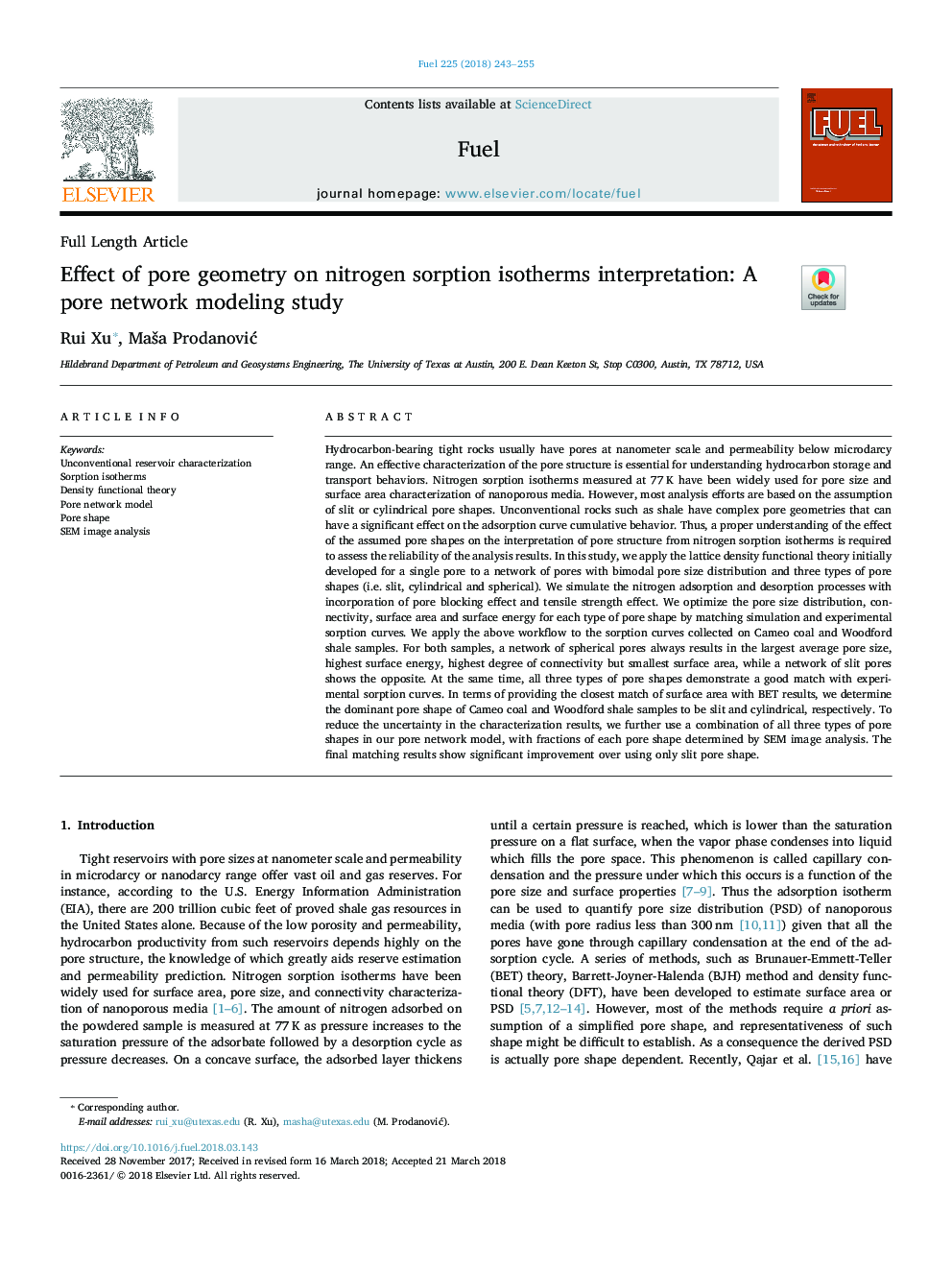| Article ID | Journal | Published Year | Pages | File Type |
|---|---|---|---|---|
| 6631001 | Fuel | 2018 | 13 Pages |
Abstract
Hydrocarbon-bearing tight rocks usually have pores at nanometer scale and permeability below microdarcy range. An effective characterization of the pore structure is essential for understanding hydrocarbon storage and transport behaviors. Nitrogen sorption isotherms measured at 77â¯K have been widely used for pore size and surface area characterization of nanoporous media. However, most analysis efforts are based on the assumption of slit or cylindrical pore shapes. Unconventional rocks such as shale have complex pore geometries that can have a significant effect on the adsorption curve cumulative behavior. Thus, a proper understanding of the effect of the assumed pore shapes on the interpretation of pore structure from nitrogen sorption isotherms is required to assess the reliability of the analysis results. In this study, we apply the lattice density functional theory initially developed for a single pore to a network of pores with bimodal pore size distribution and three types of pore shapes (i.e. slit, cylindrical and spherical). We simulate the nitrogen adsorption and desorption processes with incorporation of pore blocking effect and tensile strength effect. We optimize the pore size distribution, connectivity, surface area and surface energy for each type of pore shape by matching simulation and experimental sorption curves. We apply the above workflow to the sorption curves collected on Cameo coal and Woodford shale samples. For both samples, a network of spherical pores always results in the largest average pore size, highest surface energy, highest degree of connectivity but smallest surface area, while a network of slit pores shows the opposite. At the same time, all three types of pore shapes demonstrate a good match with experimental sorption curves. In terms of providing the closest match of surface area with BET results, we determine the dominant pore shape of Cameo coal and Woodford shale samples to be slit and cylindrical, respectively. To reduce the uncertainty in the characterization results, we further use a combination of all three types of pore shapes in our pore network model, with fractions of each pore shape determined by SEM image analysis. The final matching results show significant improvement over using only slit pore shape.
Related Topics
Physical Sciences and Engineering
Chemical Engineering
Chemical Engineering (General)
Authors
Rui Xu, MaÅ¡a ProdanoviÄ,
